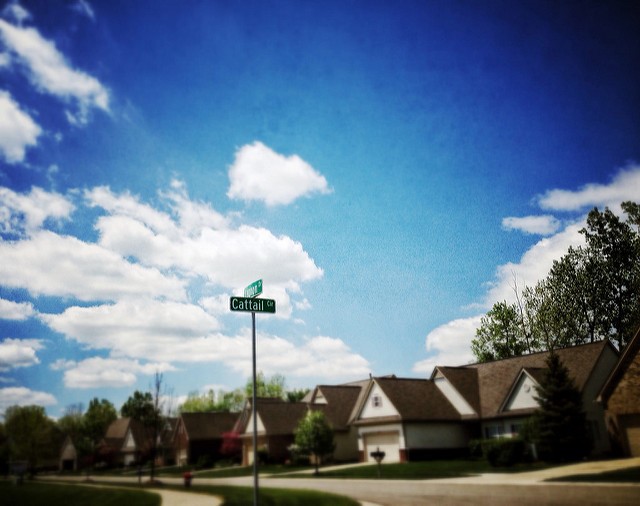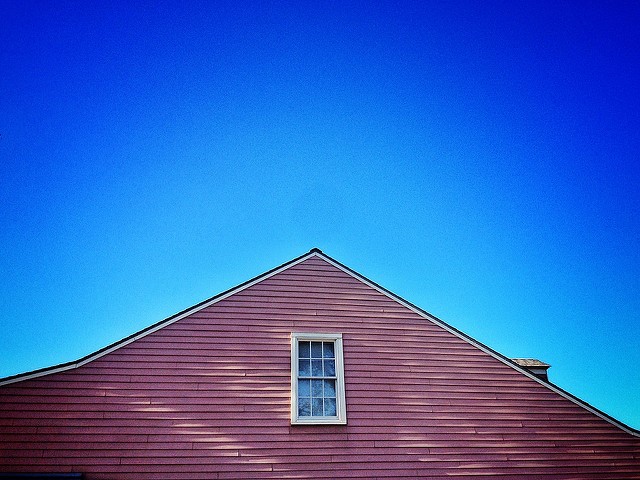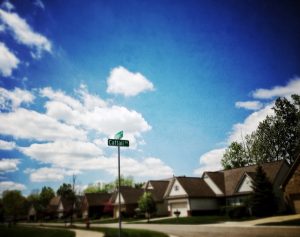A “bedroom community” refers to a suburb outside a major metropolis where the majority of residents commute to the city for work. These town have a number of characteristics that identify them but, according to new research from NeighborhoodScout, they are also known for safety. In fact, these suburban cities topped their most recent list of the nation’s safest cities. Andrew Schiller, CEO of NeighborhoodScout, says bedroom communities combine features that are attractive to home buyers. “We continue to see bedroom communities, which are within large metro areas and near major urban centers like Boston, Chicago, and New York, make the top of our list,” Schiller says. “These safe communities within the urban/suburban fabric of America’s largest metropolitan areas often combine access to high-paying jobs in the urban center, decent schools, and a high quality of life. This access to opportunity increases home values, with the result often being lower crime.” Cities in the Northeast topped the list, including Ridgefield, CT, which was named the country’s safest city. More here.

These Savannah Spots Have the Most Festive Decor
There’s something magical about Savannah during the holiday season! Dazzling lights, festive décor and Christmas cheer fill the city from top to bottom. If you can’t get enough of Christmas-themed décor, events and spirit, you’ve got to check out these jolly Savannah spots.

City Market
Savannah’s spirit becomes even more exquisite during the holiday season, and City Market is no exception. Stroll beneath holiday lights, taste sweet treats in City Market shops and find the perfect gifts for your loved ones, all while being serenaded by Christmas carolers.
There are also plenty of events to look forward to during City Market’s holiday season. Children will have the chance to make ornaments, decorate cookies and get Grinched (a tradition of Grinch-inspired hair and makeup!). Kids of all ages can also meet Father Christmas and take a Cinderella carriage tour. All this plus face painting, choir music and more add up to a day of fun the whole family can truly enjoy. Look at City Market’s calendar to learn more.
The Forsyth Park Fountain is certainly beautiful year-round, but it’s even more dazzling at Christmastime. Festive wreaths, bright bows and garland frame the already picturesque fountain. During the holiday season, the Forsyth Park fountain often becomes the location for family Christmas cards and engagement photos. It’s a Christmas lover’s dream come true!

Broughton Street
At Christmastime, the shops, boutiques and restaurants along Broughton Street decorate inside and out. Bright, sparkling lights are streamed from building to building all along Broughton Street creating a picture-perfect backdrop for holiday shoppers.
The festive season, called “Holidays on Broughton,” also offers seasonal events for all ages and interests. From the return of a beloved children’s toy store in a pop-up experience to photos with Santa and musical performances, eventgoers can count on an experience that will prove magical year after year.
Throughout the whimsical holiday event, many of the unique and eclectic shops along Broughton Street will offer extended hours of operation and holiday shopping incentives. It’s surely the most wonderful time of the year on Broughton Street!
By:Larissa Allen
How To Make Buying A House Less Complicated
When asked, Americans overwhelmingly say they value homeownership and believe it increases financial stability. In fact, one recent survey found 93 percent of respondents said they felt that homeownership was an important part of the American dream. Still, despite their desire to buy and own a home, many Americans hesitate before pursuing their dream of becoming homeowners. And while there are many reasons for this, one of them is misconceptions about the home buying process. NeighborWorks America’s fifth annual national housing survey, for example, found a growing number of respondents who say the home buying process is confusing. According to the results, 74 percent of adults said they strongly or somewhat agree that “the home buying process is complicated.” That’s up from 67 percent last year. What accounts for the increase is anybody’s guess but it reinforces the fact that prospective buyers should make choosing a reputable lender and real estate agent among the first steps they take after deciding to buy a home. Working with experienced professionals will demystify the buying process and help you navigate the ins-and-outs of purchasing a house. More here.

Are Fewer Young Americans Buying Homes?
 A newly released study from researchers at the University of Southern California looks at homeownership rates among young adults between the ages of 25 and 44. The study’s results show, among that age group, there’s been a 10 percent drop in the homeownership rate over the past 10 years.
A newly released study from researchers at the University of Southern California looks at homeownership rates among young adults between the ages of 25 and 44. The study’s results show, among that age group, there’s been a 10 percent drop in the homeownership rate over the past 10 years.
But does that necessarily mean young Americans are no longer interested in owning their own home? Well, no. The researchers point to a number of factors that have contributed to the decline in homeownership among people of typical prime home-buying age. Among them, the foreclosure crisis looms large. Because the past 10 years includes the years following the housing crash and economic crisis, some of that decline is better explained by the day's economic conditions rather than a lack of desire to buy a house. And, in the years since, the recovery's slow pace and weakened job market have made buying a home a struggle for many young Americans.
More recently, home buyer demand has rebounded – as have home prices and the labor market. And, according to this particular study, so will the homeownership rate among young Americans, particularly if there's a continued rise in education and income levels. More here.
Tracking The Habits Of First-Time Home Buyers
First-time home buyers have always been an important demographic when tracking the housing market’s health. Whether or not younger Americans were buying homes, where they were buying, and in what numbers has been used to gauge trends and patterns that affect, not only first-time buyers, but everyone active in the real-estate market. Because of that, a new report from Genworth Financial analyzing first-time home buyer records back to 1994 is an important look at the who, what, where, and how of Americans buying their first home. Some of the highlights include the fact that first-time buyers bought more single-family homes during the first quarter of 2017 than during any other first quarter since 2005 and drove 85 percent of the housing market’s expansion from 2014 through 2016. In other words, the report found that there is currently a high level of demand among younger Americans. But it also found that many potential buyers have been unable to buy or have stayed out of the market due to misconceptions about what was required. Tian Liu, Genworth’s chief economist, says one of the main issues is the mistaken belief that a 20 percent down payment is required to buy. “By studying this group more closely, we hope to bring a better understanding about the many low down payment options available to help first-time home buyers reach homeownership sooner.” More here.
Rents Are Increasing In The Suburbs Too
There are two groups commonly associated with renting. One is young people. The other is people living in urban centers. Conjure up an image of the typical renter and you’ll probably end up imagining someone in their 20s living in a downtown apartment building. The suburbs, on the other hand, have been traditionally thought of as the place you move to when you’re ready to settle down and buy a house. However, new numbers tell a different story. In fact, the latest data shows rental costs are actually rising faster in the suburbs than in cities. Why? There are a couple of reasons. First, rent has been rising rapidly in cities for quite a few years now, which is causing people to look outside city limits for a more affordable place to live. Another is a relative lack of rental properties in the surrounding suburbs. Where there are fewer options, potential renters are going to find rising prices. One option for discouraged renters is to compare the costs of homeownership in their area. In many markets, buying is actually a more affordable option or, at the very least, compares favorably. More here.

Home Sales Have Best Year Since 2006
In 2016, sales of previously owned homes reached their highest level in 10 years, according to new estimates from the National Association of Realtors. A combination of low mortgage rates and an improving economy helped push sales higher than the year before. Still, they remain about 1 million short of where they were in 2006. Lawrence Yun, NAR’s chief economist, says conditions were favorable for most of the year but December sales declined from the month before. “Solid job creation throughout 2016 and exceptionally low mortgage rates translated into a good year for the housing market,” Yun said. “However, higher mortgage rates and home prices combined with record low inventory levels stunted sales in much of the country in December.” In fact, sales were down 2.8 percent from November, though they remain 0.7 percent higher than they were a year earlier. Still, lower-than-normal inventory levels mean prices could continue to see upward pressure unless more homeowners put their homes up for sale or new home construction ramps up this year. Also in the report, home prices rose 4 percent from December 2015 and inventory has now fallen year-over-year for 19 consecutive months. More here.

Millennials Choosing Suburbs Over The City
Millennials Choosing Suburbs Over The City

Millennials Choosing
Suburbs Over The City
While it’s true that – among demographic groups – there are more young people living in urban centers than any other age group, new research shows that 47 percent of millennial homeowners actually bought in the suburbs. The data, from the Zillow Group’s Consumer Housing Trends Report, shows that, despite conventional wisdom, there are many young Americans that are drawn to the suburbs because they can provide more space and a lower cost of living. But not only are there a larger than expected number of young Americans buying in the suburbs, there are a growing number of young Americans buying in general. “Millennials are shaping the market more than anyone realized,” Jeremy Wacksman, Zillow’s chief marketing officer, said. “In fact, half of all buyers are under 36 and half of sellers are under 41.” The long rumored return of first-time home buyers appears to have officially started and that’s good news for the housing market. But this time around things are a bit different. For example, today’s first-time buyer isn’t shopping for the typical “starter” home. The research shows that – perhaps because they’ve waited longer to buy their first home – younger Americans are buying homes that are nearly as large as the typical “move-up” home. More here.

